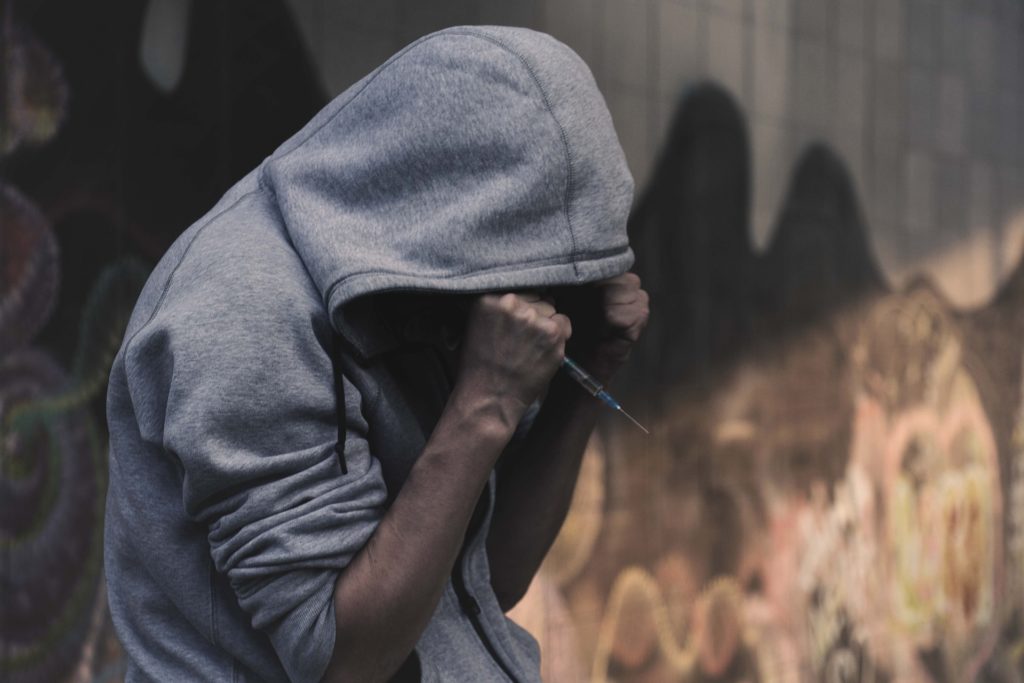
Depression and opioid abuse are common among all age groups. Through recent research, new findings have emerged about the connection between depression and opioid addictions.
Learning to manage your long-term recovery from both addiction and depression is a difficult process that can be managed with a mix of therapies, treatment, and aftercare support.
Opioids Role in Depression
In a study conducted by St. Louis University, over 100,000 individuals from the Veterans Health Administration and two private hospitals were studied for opioid abuse and comorbid disorders.
The study found that 10% of the 100,000 patients developed depression after opioid use of 30 days or more [1]. Interestingly enough, none of the patients had a prior diagnosis of depression and this finding was consistent across all three treatment settings.
The research lead believes that depression can be onset with opioid use due to changes in the reward and pleasure areas of the brain, as well as lower testosterone levels due to opioid ingestion.
There is no debating that opioid abuse and the addiction to opiates have reached epidemic proportions within the United States. The prescribing of opioids has contributed to 183,000 people dying from overdoses between 1999 and 2015 according to the Centers for Disease Control [2].
Opioids may have a short-acting anti-depressant property to it which lures people with a mood disorder to seek opiate prescriptions from their primary physician.
Sadly, almost 37 million Americans with mood disorders are using opioids to help manage depression symptoms, compared to 5% of the general population [2]. This equates to about 60 million prescriptions annually for individuals with a mood disorder which is a startling number.
Importance of Treatment
Both mood disorders and addiction can be treated concurrently. Often relapse occurs due to one co-occurring issue influencing the other. It can be difficult to reach or maintain recovery if only the addiction or mood disorder is being treated [3].

In dealing with depression and opiate addiction, an effective and comprehensive treatment plan is imperative. This plan needs to address the opioid addiction which should include medical detoxification to manage withdrawal symptoms from the opioids.
To determine the best care and treatment, a full evaluation and assessment identifying all risk-factors such as medical, behavioral, and mental health comorbidity are needed. Individualized treatment goals and a stable treatment plan can include traditional therapies, alternative therapies, holistic care, and support groups.
Medications may also be necessary but should be strictly monitored especially if there is a concern of abuse or misuse.
Multiple Treatment Options for Long-Term Recovery
Dual diagnosis is when a person is struggling with a drug addiction and a mental health disorder. Over 10 million Americans suffer from a severe mental illness, and 8.2 million have a co-occurring disorder [4].
A common occurrence is individuals struggling with opioid addiction and depression. In 2015 it was estimated that there were enough opioids prescribed in the United States alone, for every American to be medicated 24 hours a day for three weeks [4].
Opioids often change the brain’s chemistry and hormone levels which may lead to depressive symptoms. With continued opioid use and abuse, the symptoms can worsen and can remain even if the addiction has ceased.
Around 40% of individuals receive treatment for either disorder and about 5% access treatment for both addiction and a mood disorder [4].
Therapies such as Cognitive Behavioral Therapy (CBT), Dialectical Behavioral Therapy (DBT) are highly effective for treating both issues. Using traditional therapies with more holistic ones such as animal therapy, mindfulness, art, and expressive therapies can aid in long-term recovery coping skills and support plan.
CBT works to identify and counter negative thoughts, feelings, and behaviors due to depression and addictions. DBT works to help understand and deal with emotions both cognitively and physically. It works by using mindfulness and learning how to manage self-destructive behaviors.
Holistic therapies such as meditation, yoga, nutrition, meal planning, and self-care skills can help empower individuals to gain internal control over themselves.
Signs of Addiction and Mood Disorders
Signs of depression can include increased fatigue, muscle weakness, chronic pain, lack of interest in activities, and isolation from friends. Often there are changes in sleep patterns and eating habits.

Many sufferers will report feelings of guilt, despair, and lack of energy when suffering from depression.
Signs of opioid addiction often include increasing the amount of drugs used to get the same feelings and effects. The sufferer also has difficulty cutting back or stopping the drug use.
Comprehensive Treatment
Comprehensive treatment is available for both depression and opiate abuse [5]. Medications can help with any withdrawal effects related to the addiction. This coupled with antidepressants to help with mood disorder symptom management can lead to a successful recovery.
Recovery and healing are possible from both a mood disorder and an opioid addiction. The first step is reaching out for help and support which is the essential part in the recovery process.
 About the Author: Libby Lyons is a Licensed Clinical Social Worker and Certified Eating Disorder Specialist (CEDS). Libby has been practicing in the field of eating disorders, addictions, depression, anxiety and other comorbid issues in various agencies. Libby has previously worked as a contractor for the United States Air Force Domestic Violence Program, Saint Louis University Student Health and Counseling, Saint Louis Behavioral Medicine Institute Eating Disorders Program, and has been in Private Practice.
About the Author: Libby Lyons is a Licensed Clinical Social Worker and Certified Eating Disorder Specialist (CEDS). Libby has been practicing in the field of eating disorders, addictions, depression, anxiety and other comorbid issues in various agencies. Libby has previously worked as a contractor for the United States Air Force Domestic Violence Program, Saint Louis University Student Health and Counseling, Saint Louis Behavioral Medicine Institute Eating Disorders Program, and has been in Private Practice.
Libby currently works as a counselor at Fontbonne University and is a Adjunct Professor at Saint Louis University, and is a contributing author for Addiction Hope and Eating Disorder Hope. Libby lives in the St. Louis area with her husband and two daughters. She enjoys spending time with her family, running, and watching movies.
References:
[1] Long Term Opioid Use May Cause Depression. (2016, January 14). Retrieved October 22, 2017, from https://www.painnewsnetwork.org/stories/2016/1/14/long-term-opioid-use-linked-to-depression
[2] 51 percent of opioid prescriptions go to people with depression and anxiety. (2017, June 26). Retrieved October 22, 2017, from https://www.statnews.com/2017/06/26/opioids-depression-anxiety/
[3] Depression and Opiate Addiction: The Connection. (2016, July 28). Retrieved October 22, 2017, from https://www.greenhousetreatment.com/blog/depression-and-opiate-addiction-the-connection/
[4] Dual Diagnosis: Treating Depression and Opioid Addiction. (n.d.). Retrieved October 22, 2017, from https://lifeskillssouthflorida.com/dual-diagnosis-treating-depression-and-opioid-addiction/
[5] Depression and Opioid Abuse: How Painkillers Affect Your Mental Health. (n.d.). Retrieved October 22, 2017, from https://www.psycom.net/depression.central.opioid.abuse.html
The opinions and views of our guest contributors are shared to provide a broad perspective of addictions. These are not necessarily the views of Addiction Hope, but an effort to offer discussion of various issues by different concerned individuals.
We at Addiction Hope understand that addictions result from a combination of environmental and genetic factors. If you or a loved one are suffering from an addiction, please know that there is hope for you, and seek immediate professional help.
Published on January 2, 2018
Published on AddictionHope.com
